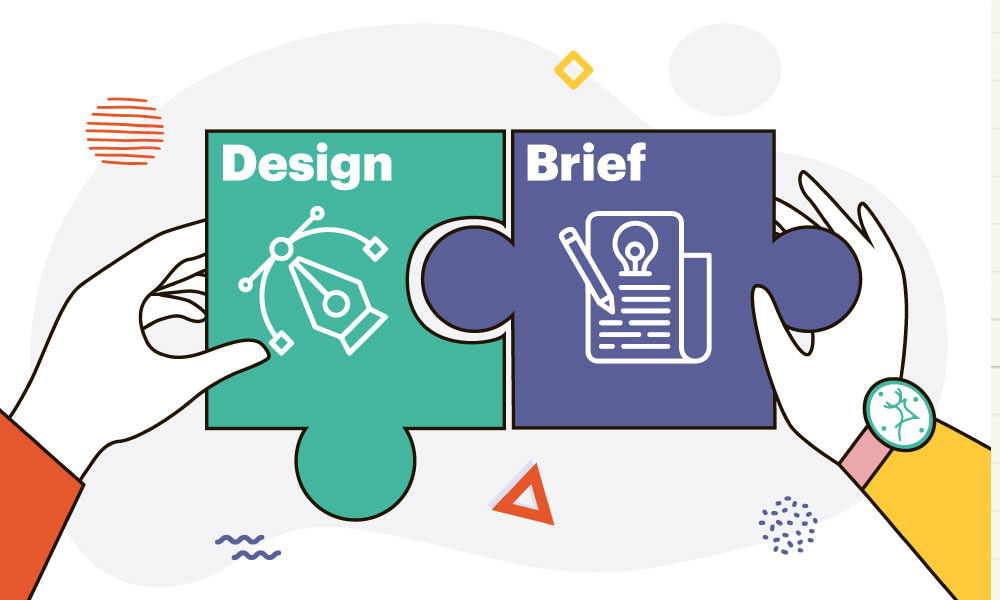Rules for briefing a Graphic designer
Before any actual work is done, graphic designers and potential clients conduct what we call the “little dance of social anxiety”—briefs, in case you’re not too familiar.
The customer normally takes the lead, outlining their desired type of work as well as all the essentials of the job, such as deadlines, schedules, and overall vibes. If they are very put together, their budget may even be developed without much prodding. In the meantime, the designer tries their hardest to keep their more ambitious ideas to themselves, usually fails, and ends up engaging the client in a heated discussion about the aesthetics of 18th-century France before promising to complete a period-perfect Parisian bookshop within a restless 48-hour window.
I have developed preferences for how I prefer to be briefed after doing this dance enough times to work unappreciated in the background of Strictly Come Dancing. I’m going to outline here the absolute guidelines for briefing a graphic designer because this is my blog, and the authorities haven’t yet taken control of its content. I can’t be stopped.
Put all the important info in one place (please, thank you)
Graphic designers vary in how they prefer to be treated, much like individuals. Some designers are perfectly happy to communicate primarily via Twitter, receive hourly updates on MSN, receive examples via Instagram, and be added to their mood boards on Pinterest. These designers might be missing their calling as professional jugglers, but I won’t go so far as to refer to them as “animals.”
I would much rather have everything we discuss in one location, so I can quickly review it again, and email is that location. This is now a strict rule—sorry, jugglers, no backsies—because I said so.
But there’s a valid reason for this, so it’s not just me being pretentious. An email is a paper trail that doesn’t simply disappear, unlike your many social media accounts or any information that is communicated orally. It means that both the client and the designer are aware of what has been agreed upon, and it is extremely difficult and cruel to change it after the fact. Although I don’t like being gaslit, I must admit that it’s much harder to pull it off when it’s all in black and white.
The information you should provide in your email is short
That being said, the fact that material is included in the email brief early on does not imply that I am not flexible or that you should not be. Graphic designers shouldn’t expect clients to have all the facts sussed right away, and clients shouldn’t stress about not having everything worked out on the first day.
Being a little adaptable, cool, and amiable is helpful, at least during the first few conversations, after which you can progressively allow your worst tendencies to surface, as was the main idea of my article on the three Ps of Graphic Design for Film. I’m mostly joking.
In general, there are two methods that I find effective when you provide me with your brief:
The ‘brief’ Brief
You have a million people to contact and are occupied with organising everything. All you want is the necessities so that you may obtain a resounding yes and continue with your day. This is so relatable.
Simply email me a message along the lines of “This is a brief outline of my project.” Are you available, and what are your daily rates before I start? Simple messages like the one above have led to some of the best graphic design jobs and most satisfying client-designer relationships ever.
The Big Brief
Naturally, you want the “absolute musts” agreed upon first and foremost and don’t want to waste time determining what is truly doable given the project’s timetable, budget, and creative plan. Although there is such a thing as too much knowledge, or more importantly, too much useless information, this is still highly admirable.
Everything worth including in The Big Brief is as follows:
- Timelines — a light overview of what the road ahead looks like.
- The elevator pitch — a logo for a ballet class for babies. A flyer for a show about Shakespeare secretly being a ballet-dancing baby.
- Dimensions — for example: “I need an A4 poster that I’ll be printing professionally, and then some social media sizes – roughly 5 of them, the usual headers and ad sizes.”
- Deadlines — specifically when you need these graphics sent to you (dream and realistic scenarios appreciated — sometimes those mountains can indeed be moved).
- Target audience — let me know who is going to see this.
- If the job relates to a previous piece you’ve designed, let me know if you have editable files from your previous designer or just static copies.
- “Can I get a quote and a timeline from you?”



No Comments